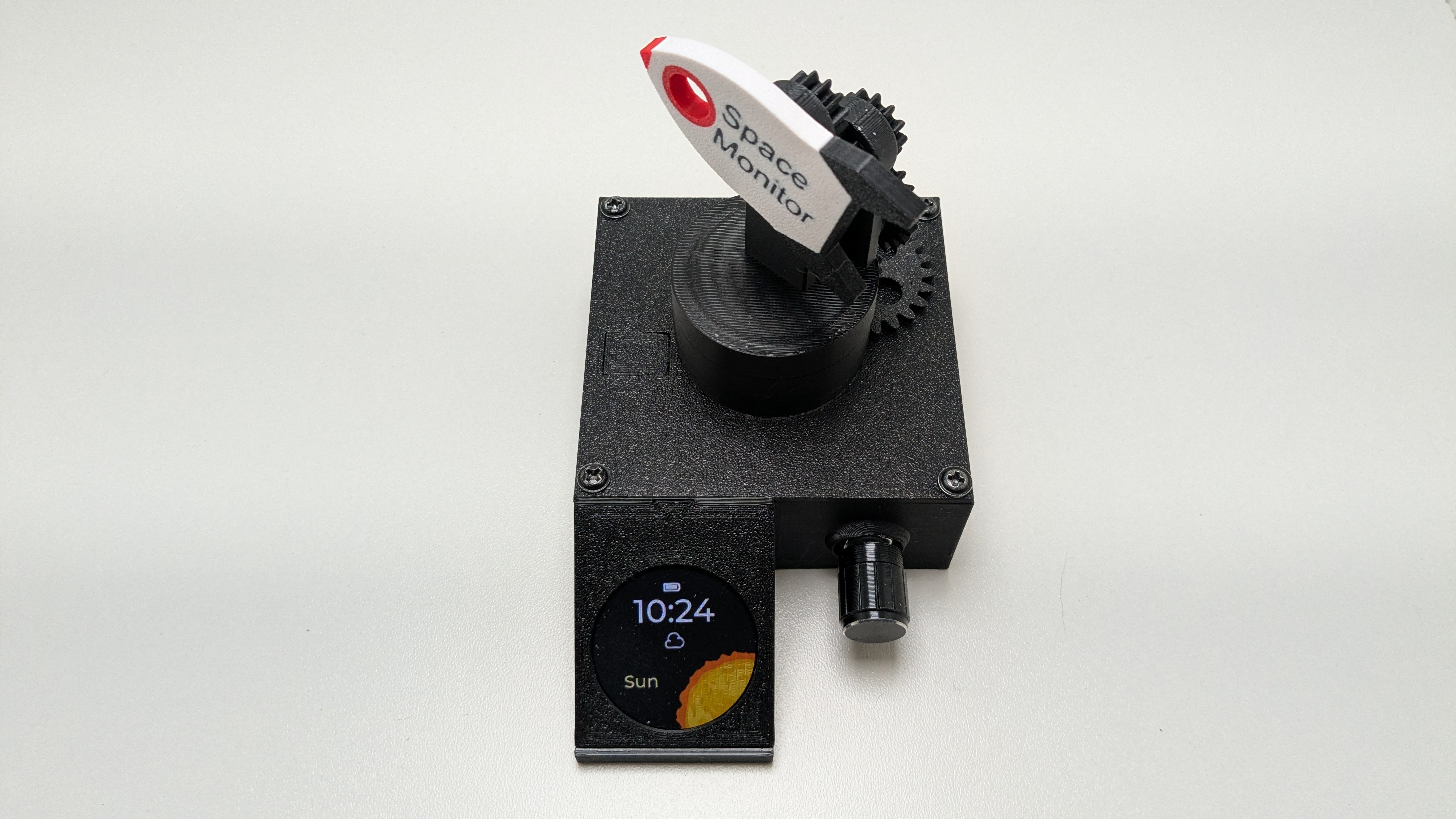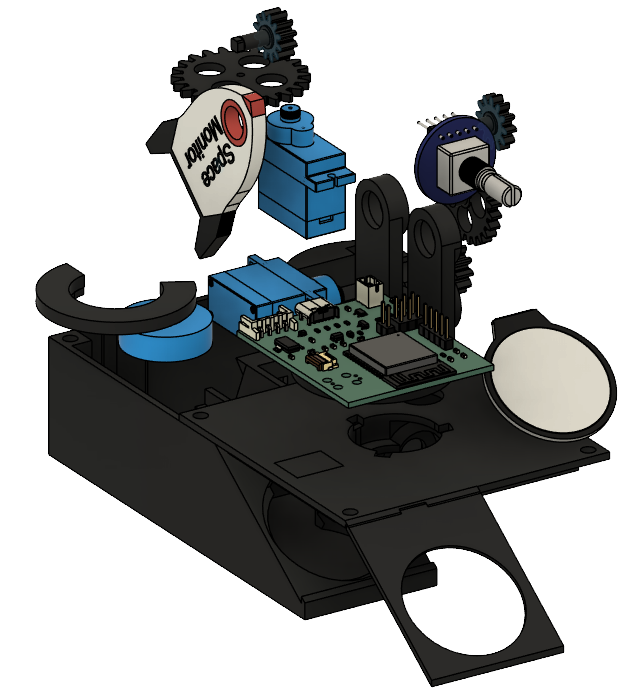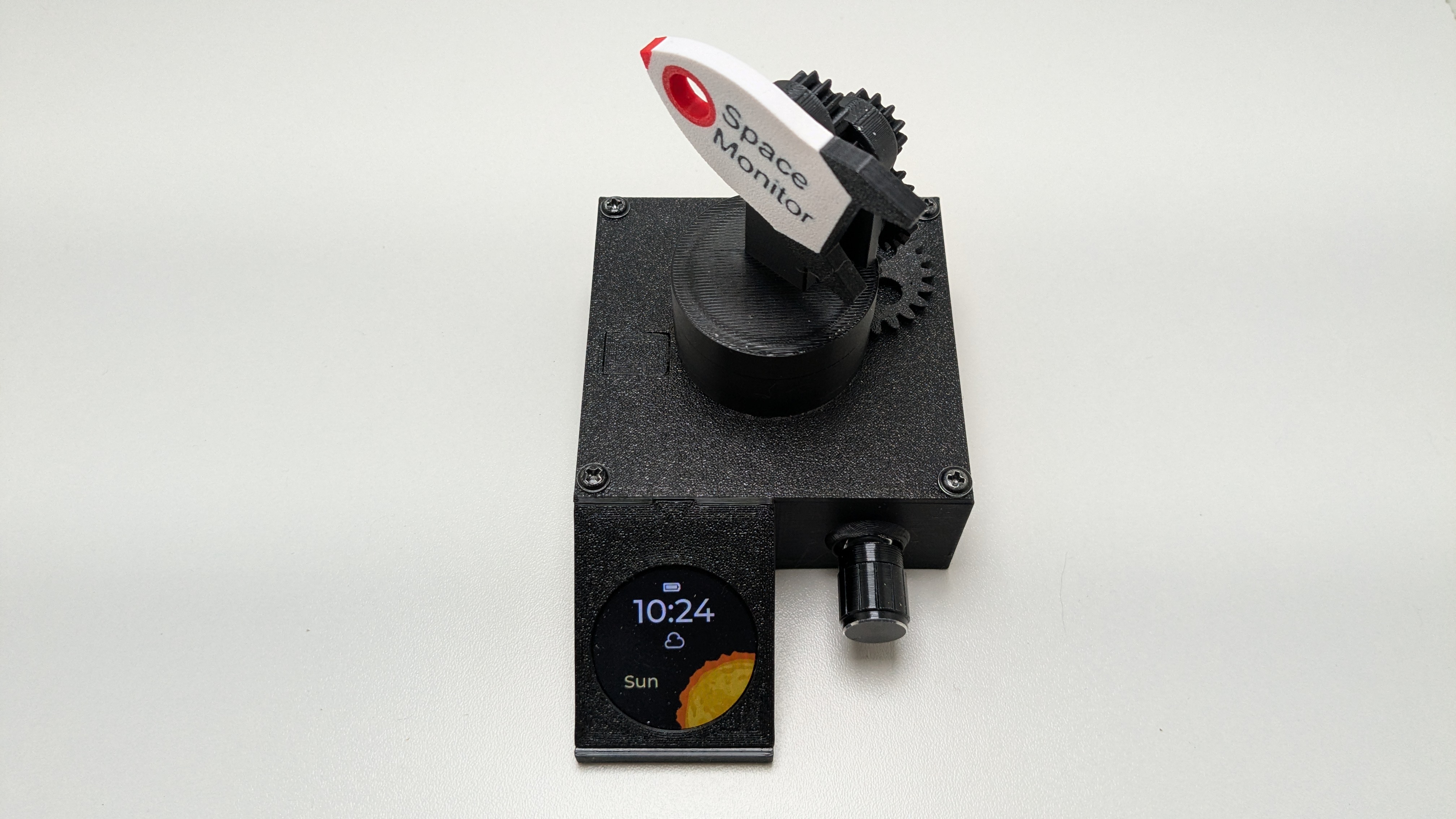Since my previous blog, quite a lot has changed in my project. I thought this would be a good moment for an update, where I’ll share the progress I’ve made on both the software and hardware fronts. Many improvements have been implemented, from more accurate battery management to enhanced 3D models. I’ve also created a timelapse of Mars and the ISS for demonstration.

Firmware Improvements
- Battery Management: Accurate battery percentage readings and detection of the charging cable.
- Bug Fixes: Various bugs that disrupted the system have been resolved, making it much more stable.
- Weather Updates: The system now automatically checks the current weather every 10 minutes and displays an icon for conditions like rain, clouds, or snow.
- ISS and Mars Tracking: Real-time tracking of both the ISS and Mars is now possible.
- OS Upgrade: The operating system has been upgraded to the latest version, improving overall performance.
- QR-Code Access Point: Connecting to the Space Monitor's access point is now easier thanks to a QR code, allowing smartphones to connect automatically.
- Memory Manager & Factory Reset: Improved memory management and the option to reset the system to factory settings if needed.
- UI Improvements: Numerous small tweaks and enhancements to the user interface.
Hardware Improvements
- Faster and Newer Microcontroller (ESP32 S3): The ESP32 S3 is much more powerful and has more memory.
- Motor-Compatible Components: New components designed for motors improve the performance of moving parts (e.g., the rocket pointer).
- New LCD Screen: A new LCD screen with a flat cable connector simplifies installation and connectivity.
- Status LEDs: Added status LEDs make it easier to see the system's current state.
- Plug-and-Play Sensor (Future Preparation): A future sensor will allow automatic north calibration.
Timelapse
Mars timelapse
ISS Timelapse
3D Model Improvements
- New Rocket Pointer: Redesigned for easier space object pointing.
- Gear Margin Enhancements: Reduced gear slack, resulting in much smoother and more precise movements.
What's next?
- Remote Firmware Update – Perform updates over WiFi.
- Pluggable Sensor – Automatic north calibration.
- Planetary Motion Simulation – Visualize how planets move over hours or days.
- Expanded Tracking – Support for tracking Venus, Mercury, Jupiter, Saturn, Uranus, and Neptune.
There’s still plenty in the pipeline! For now, I’m very pleased with the progress and excited to continue developing further.

